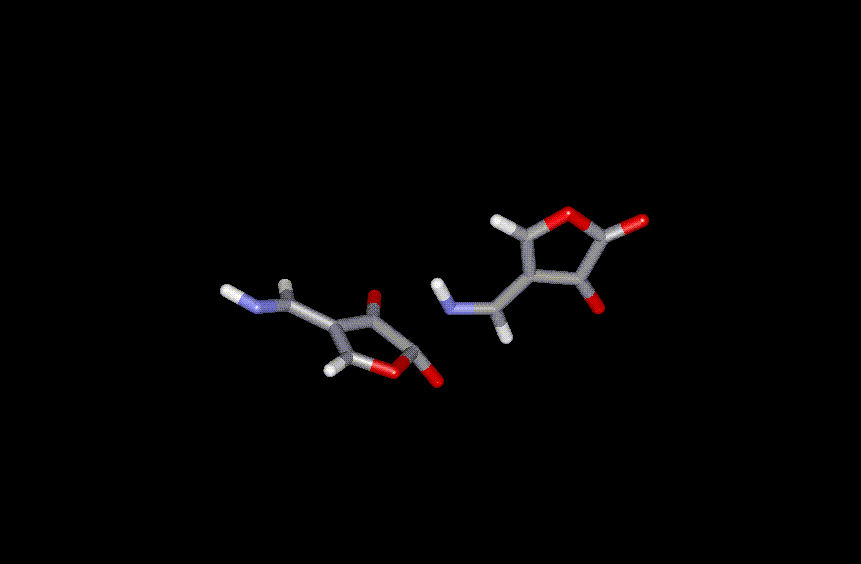

Nucleophilic attack of the imino nitrogen at C2 (the lacton carbonyl carbon) of a second molecule 1 would lead to a zwitterionic intermediate; cyclisation and elimination of this intermediate yields a mixture of starting material and product. Energetics as well as structural features for such a reaction sequence are summarised in Table 2 . Activation energies are fairly low; the rate determining step appears to be the formation of the primary adduct (tetrahedral intermediate).
Figure 3. Transition state for the nucleophilic attack between two molecules
1 (rate determining step).
You have to install the ChemScape
CHIME plugin with Netscape 3.0 (or higher) in order to see the embedded
images and to manipulate the displayed molecules "live" on your screen
Alternatively you can download freeware programs such as RASMOL
or WEBLAB VIEWER that can read
the *.pdb file.
Based on the computed activation energies a bimolecular mechanism involving two molecules 1 seems to be a quite reasonable mechanistic possibility. However, recent experiments on highly purified 1 indicate that some catalysis is necessary to initiate the rearrangement.